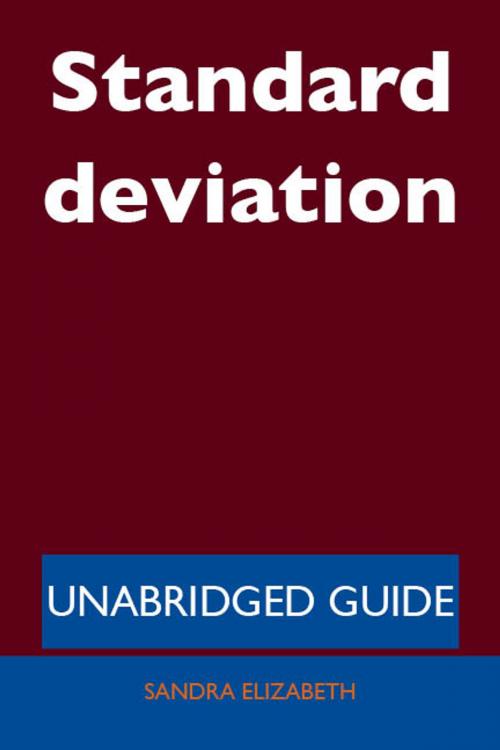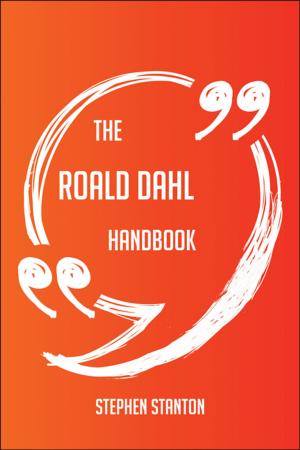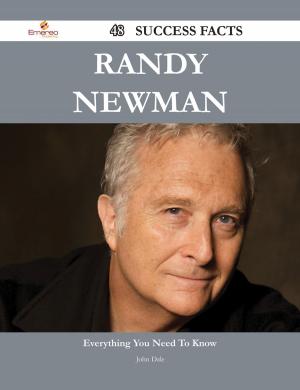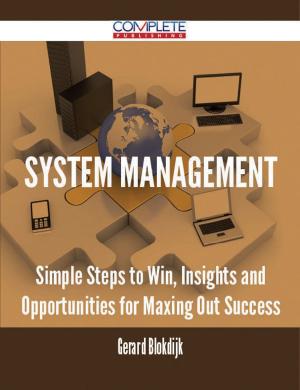| Author: | Sandra Elizabeth | ISBN: | 9781486428687 |
| Publisher: | Emereo Publishing | Publication: | October 24, 2012 |
| Imprint: | Emereo Publishing | Language: | English |
| Author: | Sandra Elizabeth |
| ISBN: | 9781486428687 |
| Publisher: | Emereo Publishing |
| Publication: | October 24, 2012 |
| Imprint: | Emereo Publishing |
| Language: | English |
Here's part of the content - you would like to know it all? Delve into this book today!..... : If they instead were a random sample, drawn from some larger, parent population, then we should have used 7 (which is n - 1) instead of 8 (which is n) in the denominator of the last formula, and then the quantity thus obtained would have been called the sample standard deviation.
...When considering more extreme possible returns or outcomes in future, an investor should expect results of as much as 10 percent plus or minus 60 pp, or a range from 70 percent to -50 percent, which includes outcomes for three standard deviations from the average return (about 99. 7 percent of probable returns).
...If a data distribution is approximately normal then about 68 percent of the data values are within one standard deviation of the mean (mathematically, µ ± s, where µ is the arithmetic mean), about 95 percent are within two standard deviations (µ ± 2s), and about 99. 7 percent lie within three standard deviations (µ ± 3s).
... If the size (actual or relative to one another), mean, and standard deviation of two overlapping populations are known for the populations as well as their intersection, then the standard deviation of the overall population can still be calculated as follows:
There is absolutely nothing that isn't thoroughly covered in the book. It is straightforward, and does an excellent job of explaining all about Standard deviation in key topics and material. There is no reason to invest in any other materials to learn about Standard deviation. You'll understand it all.
Inside the Guide: Standard deviation, Correlogram, Correlation and dependence, Control chart, Confidence interval, Computational formula for the variance, Coefficient of variation, Chebyshev's inequality, Central limit theorem, CERN, Box plot, Bollinger Bands, Bias of an estimator, Bessel's correction, Bayes factor, Bayes estimator, Average true range, Analysis of variance, Algorithms for calculating variance, Accuracy and precision, Absolute deviation, 68-95-99.7 rule
Here's part of the content - you would like to know it all? Delve into this book today!..... : If they instead were a random sample, drawn from some larger, parent population, then we should have used 7 (which is n - 1) instead of 8 (which is n) in the denominator of the last formula, and then the quantity thus obtained would have been called the sample standard deviation.
...When considering more extreme possible returns or outcomes in future, an investor should expect results of as much as 10 percent plus or minus 60 pp, or a range from 70 percent to -50 percent, which includes outcomes for three standard deviations from the average return (about 99. 7 percent of probable returns).
...If a data distribution is approximately normal then about 68 percent of the data values are within one standard deviation of the mean (mathematically, µ ± s, where µ is the arithmetic mean), about 95 percent are within two standard deviations (µ ± 2s), and about 99. 7 percent lie within three standard deviations (µ ± 3s).
... If the size (actual or relative to one another), mean, and standard deviation of two overlapping populations are known for the populations as well as their intersection, then the standard deviation of the overall population can still be calculated as follows:
There is absolutely nothing that isn't thoroughly covered in the book. It is straightforward, and does an excellent job of explaining all about Standard deviation in key topics and material. There is no reason to invest in any other materials to learn about Standard deviation. You'll understand it all.
Inside the Guide: Standard deviation, Correlogram, Correlation and dependence, Control chart, Confidence interval, Computational formula for the variance, Coefficient of variation, Chebyshev's inequality, Central limit theorem, CERN, Box plot, Bollinger Bands, Bias of an estimator, Bessel's correction, Bayes factor, Bayes estimator, Average true range, Analysis of variance, Algorithms for calculating variance, Accuracy and precision, Absolute deviation, 68-95-99.7 rule















